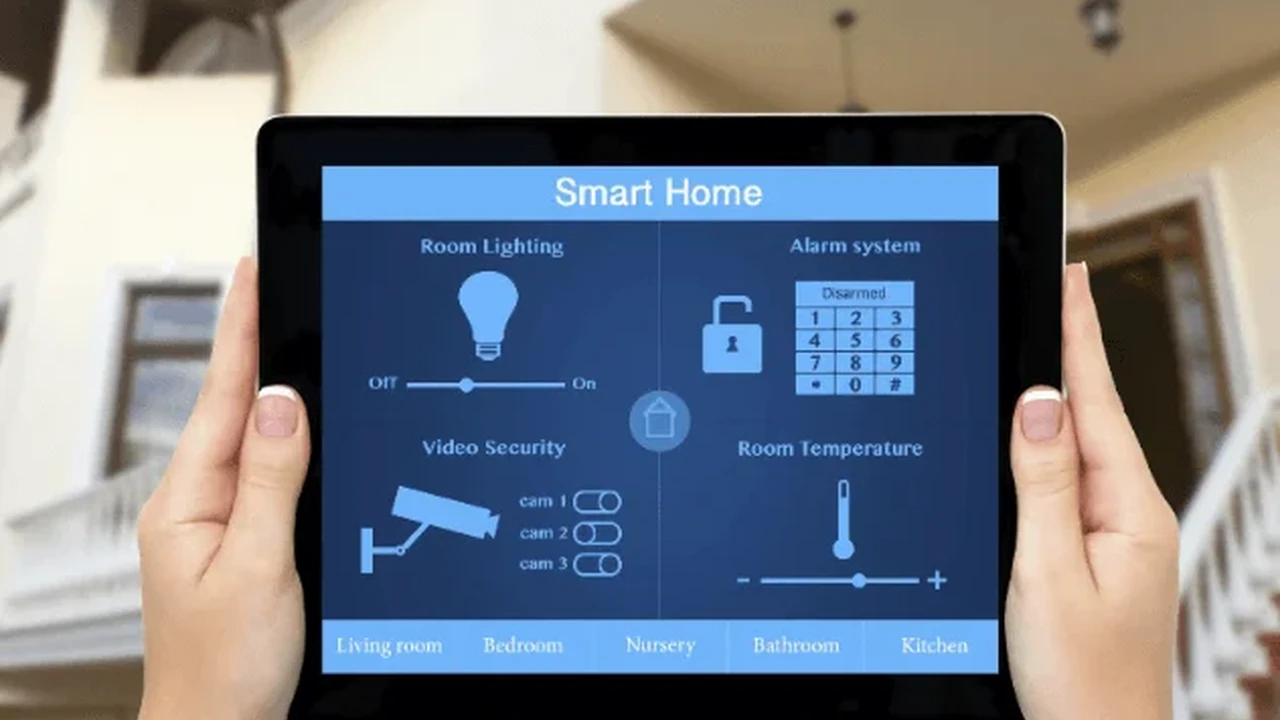7 Smart Ways to Save Money on Groceries
Implement these 7 smart strategies to significantly save money on your grocery bills every month.

7 Smart Ways to Save Money on Groceries
Mastering Your Grocery Budget The Ultimate Guide to Saving Money on Food
Grocery shopping is a weekly, sometimes daily, necessity, but it can also be one of the biggest drains on your budget. With rising food prices, finding ways to cut down on grocery expenses without sacrificing nutrition or quality has become more important than ever. This comprehensive guide will walk you through seven smart strategies, offering practical tips, product recommendations, and real-world scenarios to help you significantly reduce your monthly grocery bill. Get ready to transform your shopping habits and keep more money in your pocket!
Strategy 1 Plan Your Meals and Make a List Before You Shop
The golden rule of saving money on groceries starts before you even step foot in the store. Impulse buys are budget killers. A well-thought-out meal plan and a detailed shopping list are your best defense against overspending.
Why Meal Planning and List Making Are Crucial for Grocery Savings
- Reduces Impulse Buys: When you have a list, you're less likely to grab items you don't need.
- Minimizes Food Waste: Planning meals ensures you buy only what you'll use, preventing spoilage.
- Saves Time: No more wandering aimlessly through aisles.
- Enables Strategic Shopping: You can plan meals around sales and what you already have.
How to Effectively Plan Your Meals and Create a Smart Shopping List
Start by looking at your calendar for the week. Are there any nights you'll be eating out? Any special occasions? Then, check your pantry, fridge, and freezer. What ingredients do you already have that you can incorporate into meals? This helps prevent buying duplicates.
Next, decide on your meals for the week. Think about breakfast, lunch, dinner, and snacks. Try to incorporate versatile ingredients that can be used in multiple dishes. For example, a rotisserie chicken can be dinner one night, then used for sandwiches or salads the next day.
Once your meals are planned, create your shopping list. Organize it by sections of the grocery store (produce, dairy, pantry, frozen, etc.). This saves time and keeps you focused. Stick to your list!
Recommended Tools for Meal Planning and List Creation
- Paprika Recipe Manager: This app (available on iOS, Android, Mac, Windows) allows you to save recipes, plan meals, and automatically generate shopping lists. It even categorizes items by grocery store aisle. It costs around $4.99-$29.99 depending on the platform, but it's a one-time purchase and well worth it for serious meal planners.
- AnyList: A free and user-friendly app for creating and sharing shopping lists. It has smart suggestions and can organize items by category. A premium version (around $9.99/year) offers meal planning features.
- Good Old Pen and Paper: Sometimes the simplest tools are the best. A dedicated notebook or a printable template can be just as effective.
Strategy 2 Shop with a Full Stomach and Avoid Peak Hours
This might sound trivial, but shopping when you're hungry is a recipe for disaster for your wallet. Everything looks good when your stomach is rumbling, leading to more impulse buys and unhealthy choices.
The Science Behind Hunger and Impulse Buys
Studies show that when you're hungry, your brain is more susceptible to immediate gratification. This means you're more likely to buy high-calorie, less healthy, and often more expensive convenience foods. Eating a small snack or a meal before you head to the store can make a significant difference.
Optimizing Your Shopping Time for Better Deals and Less Stress
Avoiding peak hours (evenings, weekends) can also save you money and sanity. Stores are often less crowded during weekday mornings or late evenings. This allows you to shop more calmly, compare prices, and stick to your list without feeling rushed or overwhelmed by crowds. Less stress often leads to better decision-making.
Strategy 3 Embrace Store Brands and Generic Products
Many consumers are loyal to name brands, but often, the only significant difference between a name brand and a store brand is the packaging and the price tag. Store brands, also known as private labels or generic products, are typically 20-30% cheaper than their national brand counterparts.
The Quality and Cost Benefits of Generic Groceries
Most store brands are manufactured by the same companies that produce national brands, or by reputable co-packers. They often use the same ingredients and adhere to the same quality standards. For many pantry staples like sugar, flour, spices, canned goods, pasta, and even dairy products, you'll be hard-pressed to notice a difference in taste or quality.
Identifying the Best Generic Swaps for Your Pantry
Start by trying generic versions of items you use frequently. If you can't tell the difference, make the switch permanent. For example, instead of buying brand-name cereal, try the store's version. Instead of expensive bottled water, consider a water filter for your tap.
Product Comparison: Name Brand vs Store Brand Examples
Canned Diced Tomatoes
- Name Brand (e.g., Muir Glen Organic Diced Tomatoes): Often around $2.50 - $3.00 per 14.5 oz can. Known for consistent quality.
- Store Brand (e.g., Kroger/Walmart Great Value Organic Diced Tomatoes): Typically $1.50 - $2.00 per 14.5 oz can. Often indistinguishable in taste and texture for cooking purposes.
- Savings: Up to $1.50 per can, which adds up quickly if you use a lot of canned goods.
Oatmeal
- Name Brand (e.g., Quaker Oats Old Fashioned Oats): Around $4.00 - $5.00 for a 42 oz container.
- Store Brand (e.g., Trader Joe's Rolled Oats / Aldi's Millville Old Fashioned Oats): Typically $2.50 - $3.50 for a similar size.
- Savings: $1.50 - $2.50 per container.
Paper Towels
- Name Brand (e.g., Bounty Select-A-Size): A 6-roll pack can be $12.00 - $15.00.
- Store Brand (e.g., Target Up & Up / Costco Kirkland Signature): A comparable 6-roll pack often costs $8.00 - $10.00.
- Savings: $4.00 - $5.00 per pack.
Strategy 4 Buy in Bulk Wisely and Understand Unit Pricing
Buying in bulk can lead to significant savings, but only if done strategically. It's not always cheaper, and if you don't use everything before it spoils, you're actually wasting money.
When Bulk Buying Makes Sense for Your Household
Bulk buying is ideal for non-perishable items or items you use very frequently and can store properly. Think about:
- Pantry Staples: Rice, pasta, dried beans, flour, sugar, canned goods (if you have space).
- Frozen Goods: Meat, vegetables, fruits (if you have freezer space).
- Household Essentials: Toilet paper, paper towels, cleaning supplies, laundry detergent.
For perishable items like fresh produce or dairy, only buy in bulk if you have a large family or a plan to use or preserve them quickly (e.g., freezing berries for smoothies).
The Power of Unit Pricing for Smart Comparisons
Always check the unit price! This is the price per ounce, per pound, per sheet, etc., usually displayed on the shelf tag next to the total price. It's the most accurate way to compare different sizes and brands to see which offers the best value. A larger package isn't always the cheapest per unit.
Recommended Bulk Purchase Items and Storage Solutions
Large Containers for Dry Goods
- OXO Good Grips POP Containers: Excellent for storing flour, sugar, rice, pasta, and cereals. They are airtight, stackable, and come in various sizes. A set of 5 can cost around $50-$70, but they are durable and keep food fresh, preventing waste.
- Rubbermaid Brilliance Pantry Organization: Similar to OXO, these are clear, airtight, and stackable. A set of 10 can be around $60-$80.
Vacuum Sealer for Meats and Produce
- FoodSaver Vacuum Sealing System: Essential for extending the life of bulk-purchased meats, cheeses, and even prepped vegetables. A basic model can cost $100-$150, with bags costing extra. This investment pays for itself by preventing freezer burn and food waste.
Freezer Bags and Containers
- Ziploc Freezer Bags: Reliable for freezing individual portions or smaller quantities.
- Souper Cubes: Silicone trays that allow you to freeze liquids (soups, broths, sauces) in perfect portions. A set of two 1-cup trays is around $20-$30.
Strategy 5 Utilize Sales, Coupons, and Loyalty Programs
This is where a little bit of effort can yield significant returns. Combining sales with coupons and loyalty programs can lead to massive savings.
Maximizing Savings with Weekly Ads and Digital Coupons
Most grocery stores release weekly ads. Check these before you plan your meals. Build your meal plan around what's on sale. Many stores also offer digital coupons through their apps or websites. Load these onto your loyalty card before you shop.
Understanding Loyalty Programs and Their Benefits
Sign up for every grocery store loyalty program you frequent. These programs often provide exclusive discounts, personalized offers based on your shopping history, and sometimes even fuel points or cash back rewards. Always scan your card or enter your phone number at checkout.
Recommended Apps and Websites for Finding Deals
- Flipp: This app aggregates weekly ads from stores in your area, allowing you to browse sales and even clip digital coupons. It's free and incredibly useful for comparing prices across different stores.
- Ibotta: A cash-back app that gives you money back on specific grocery purchases. You activate offers, buy the item, and then scan your receipt. It's free to use.
- Fetch Rewards: Another cash-back app that rewards you for scanning any grocery receipt. You earn points that can be redeemed for gift cards. It's free and very easy to use.
- Store-Specific Apps: Most major grocery chains (Kroger, Safeway, Publix, Walmart, Target) have their own apps with digital coupons, weekly ads, and loyalty program integration.
Strategy 6 Reduce Meat Consumption and Embrace Plant-Based Meals
Meat, especially red meat, is often the most expensive component of a grocery bill. Incorporating more plant-based meals can significantly reduce your spending while also offering health benefits.
The Financial and Health Benefits of Plant-Forward Eating
Legumes (beans, lentils), grains (rice, quinoa), and vegetables are generally much cheaper per serving than meat. A bag of dried beans costs a fraction of a pound of ground beef and can yield multiple meals. Plus, a diet rich in plant-based foods is often associated with lower risks of heart disease, diabetes, and certain cancers.
Delicious and Budget-Friendly Plant-Based Meal Ideas
- Lentil Soup/Stew: Inexpensive, hearty, and packed with protein and fiber.
- Bean Burritos/Tacos: Use black beans or pinto beans as the main protein.
- Chickpea Curry: Chickpeas are versatile and absorb flavors beautifully.
- Pasta with Vegetable Sauce: Load up on seasonal vegetables.
- Stir-fries with Tofu/Tempeh: Tofu and tempeh are affordable protein sources.
Strategy 7 Minimize Food Waste Through Smart Storage and Usage
Food waste is like throwing money directly into the trash. The average American household wastes about 30-40% of its food supply. By properly storing food and getting creative with leftovers, you can save a substantial amount.
Effective Food Storage Techniques to Extend Shelf Life
- Proper Refrigeration: Store fruits and vegetables correctly. Some (like bananas, potatoes, onions) should not be refrigerated. Others (like leafy greens) benefit from being stored in airtight containers with a damp paper towel.
- Freezing: Freeze leftovers, bulk purchases, and even wilting produce (e.g., spinach for smoothies, overripe bananas for banana bread).
- Airtight Containers: Use good quality airtight containers for opened packages and leftovers to prevent spoilage and freezer burn.
Creative Ways to Use Leftovers and Scraps
- Transform Leftovers: Turn leftover roasted chicken into chicken salad or tacos. Leftover rice can become fried rice.
- Make Stock: Use vegetable scraps (onion skins, carrot tops, celery ends) and meat bones to make homemade broth.
- Smoothies: Use slightly overripe fruits and wilting greens in smoothies.
- Composting: For unavoidable food scraps, consider composting to enrich your garden soil.
Recommended Storage Products for Reducing Food Waste
Glass Food Storage Containers
- Pyrex Simply Store Glass Food Storage Set: Durable, oven-safe, microwave-safe, and dishwasher-safe. Glass doesn't stain or retain odors. A 10-piece set (5 containers with lids) can cost around $30-$40.
- Anchor Hocking TrueSeal Glass Food Storage: Similar to Pyrex, often slightly more affordable.
Produce Savers
- Rubbermaid FreshWorks Produce Saver: These containers use a special filter and elevated base to keep produce fresh longer by regulating airflow and moisture. A set of 3 can be around $25-$35.
- OXO Good Grips GreenSaver Produce Keepers: Similar concept with activated carbon filters.
Silicone Food Storage Bags
- Stasher Reusable Silicone Food Bags: A sustainable alternative to single-use plastic bags. They are freezer-safe, microwave-safe, and dishwasher-safe. A single sandwich bag size is around $12-$15, but they last for years.
Putting It All Together Your Path to Grocery Savings
Saving money on groceries isn't about deprivation; it's about smart choices and conscious habits. By implementing these seven strategies, you'll not only see a significant reduction in your grocery bill but also gain a better understanding of your food consumption and reduce waste. Start small, pick one or two strategies to focus on first, and gradually incorporate more. Your wallet and the planet will thank you for it. Happy saving!
:max_bytes(150000):strip_icc()/277019-baked-pork-chops-with-cream-of-mushroom-soup-DDMFS-beauty-4x3-BG-7505-5762b731cf30447d9cbbbbbf387beafa.jpg)






